#programmer core experience
Text

so. world building, am I right
#writing#writers problems#writing meme#miaraculous writing#heist au#because obviously what else would it be with plot#programmer core experience#🎶 6 chapters missing 🎶 you finish 1 chapter 🎶 8 chapters missing 🎶#miaing
3K notes
·
View notes
Text
While I really hate the narrative of "tech bros" because of how it conflates shitty CEOs with non-shitty base-level programmers, and how it conflates Dunning-Kruger-y early adopters with people who Know Their Shit about computers...
...On the AI art issue, I will say, there is probably a legit a culture clash between people who primarily specialize in programming and people who primarily specialize in art.
Because, like, while in the experience of modern working illustrators a free commons has ended up representing a Hobbseyan experience of "a war of all against all" that's a constant threat to making a living, in software from what I can tell it's kinda been the reverse.
IE, freedom of access to shared code/information has kinda been seen as A Vital Thing wrt people's abilities to do their job at a core level. So, naturally, there's going to be some very different reactions to the morality of scraped data online.
And, it's probably the same reason that a lot of the creative commons movement came from the free software movement.
And while I agree a lot with the core principles of these movements, it's also probably unfortunately why they so often come off as tone-deaf and haven't really made that proper breakthrough wrt fighting against copyright bloat.
It also really doesn't help that, in terms of treatment by capital, for most of our lives programmers have been Mother's Special Little Boy whereas artists (especially online independent artists post '08 crash) have been treated as The Ratboy We Keep In The Basement And Throw Scraps To.
So, it make sense the latter would have resentment wrt the former...
1K notes
·
View notes
Text
beginner’s guide to the indie web
“i miss the old internet” “we’ll never have websites like the ones from the 90s and early 2000s ever again” “i’m tired of social media but there’s nowhere to go”
HOLD ON!
personal websites and indie web development still very much exist! it may be out of the way to access and may not be the default internet experience anymore, but if you want to look and read through someone’s personally crafted site, or even make your own, you can still do it! here’s how:
use NEOCITIES! neocities has a built in search and browse tools to let you discover websites, and most importantly, lets you build your own website from scratch for free! (there are other ways to host websites for free, but neocities is a really good hub for beginners!)
need help getting started with coding your website? sadgrl online has a section on her website dedicated to providing resources for newbie webmasters!
HTML (HyperText Markup Language) and CSS (Cascading Style Sheets) are the core of what all websites are built on. many websites also use JS (JavaScript) to add interactive elements to their pages. w3schools is a useful directory of quick reference for pretty much every HTML/CSS/JS topic you can think of.
there is also this well written and lengthy guide on dragonfly cave that will put you step by step through the basics of HTML/CSS (what webpages are made from), if that’s your sort of thing!
stack overflow is every programmer’s hub for asking questions and getting help, so if you’re struggling with getting something to look how you want or can’t fix a bug, you may be able to get your answer here! you can even ask if no one’s asked the same question before.
websites like codepen and jsfiddle let you test HTML/CSS/JS in your browser as you tinker with small edits and bugfixing.
want to find indie websites outside the scope of neocities? use the search engine marginalia to find results you actually want that google won’t show you!
you can also use directory sites like yesterweb’s link section to find websites in all sorts of places.
if you are going to browse the indie web or make your own website, i also have some more personal tips as a webmaster myself (i am not an expert and i am just a small hobbyist, so take me with a grain of salt!)
if you are making your own site:
get expressive! truly make whatever you want! customize your corner of the internet to your heart’s content! you have left the constrains of social media where every page looks the same. you have no character limit, image limit, or design limit. want to make an entire page or even a whole website dedicated to your one niche interest that no one seems to be into but you? go for it! want to keep a public journal where you can express your thoughts without worry? do it! want to keep an art gallery that looks exactly how you want? heck yeah! you are free now! you will enjoy the indie web so much more if you actually use it for the things you can’t do on websites like twitter, instead of just using it as a carrd bio alternative or a place to dump nostalgic geocities gifs.
don’t overwhelm yourself! if you’ve never worked with HTML/CSS or JS before, it may look really intimidating. start slow, use some guides, and don’t bite off more than you can chew. even if your site doesn’t look how you want quite yet, be proud of your work! you’re learning a skill that most people don’t have or care to have, and that’s pretty cool.
keep a personal copy of your website downloaded to your computer and don’t just edit it on neocities (or your host of choice) and call it a day. if for some reason your host were to ever go down, you would lose all your hard work! and besides, by editing locally and offline, you can use editors like vscode (very robust) or notepad++ (on the simpler side), which have more features and is more intuitive than editing a site in-browser.
you can use ctrl+shift+i on most browsers to inspect the HTML/CSS and other components of the website you’re currently viewing. it’ll even notify you of errors! this is useful for bugfixing your own site if you have a problem, as well as looking at the code of sites you like and learning from it. don’t use this to steal other people’s code! it would be like art theft to just copy/paste an entire website layout. learn, don’t steal.
don’t hotlink images from other sites, unless the resource you’re taking from says it’s okay! it’s common courtesy to download images and host them on your own site instead of linking to someone else’s site to display them. by hotlinking, every time someone views your site, you’re taking up someone else’s bandwidth.
if you want to make your website easily editable in the future (or even for it to have multiple themes), you will find it useful to not use inline CSS (putting CSS in your HTML document, which holds your website’s content) and instead put it in a separate CSS file. this way, you can also use the same theme for multiple pages on your site by simply linking the CSS file to it. if this sounds overwhelming or foreign to you, don’t sweat it, but if you are interested in the difference between inline CSS and using separate stylesheets, w3schools has a useful, quick guide on the subject.
visit other people’s sites sometimes! you may gain new ideas or find links to more cool websites or resources just by browsing.
if you are browsing sites:
if the page you’re viewing has a guestbook or cbox and you enjoyed looking at the site, leave a comment! there is nothing better as a webmaster than for someone to take the time to even just say “love your site” in their guestbook.
that being said, if there’s something on a website you don’t like, simply move on to something else and don’t leave hate comments. this should be self explanatory, but it is really not the norm to start discourse in indie web spaces, and you will likely not even be responded to. it’s not worth it when you could be spending your time on stuff you love somewhere else.
take your time! indie web doesn’t prioritize fast content consumption the way social media does. you’ll get a lot more out of indie websites if you really read what’s in front of you, or take a little while to notice the details in someone’s art gallery instead of just moving on to the next thing. the person who put labor into presenting this information to you would also love to know that someone is truly looking and listening.
explore! by clicking links on a website, it’s easy to go down rabbitholes of more and more websites that you can get lost in for hours.
seeking out fansites or pages for the stuff you love is great and fulfilling, but reading someone’s site about a topic you’ve never even heard of before can be fun, too. i encourage you to branch out and really look for all the indie web has to offer.
i hope this post helps you get started with using and browsing the indie web! feel free to shoot me an ask if you have any questions or want any advice. <3
#webcore#old web#nostalgia#geocities#neocities#internet nostalgia#indie web#90s#early 2000s#y2k#guide#masterpost#html#css#javascript#internetcore#hope all these tags are appropriate for outreach!#wasn't quite sure#ayano was here#long post#i didn't want to advertise in this guide but if you're reading this my website is classicpokemonguide by the way!
22K notes
·
View notes
Text
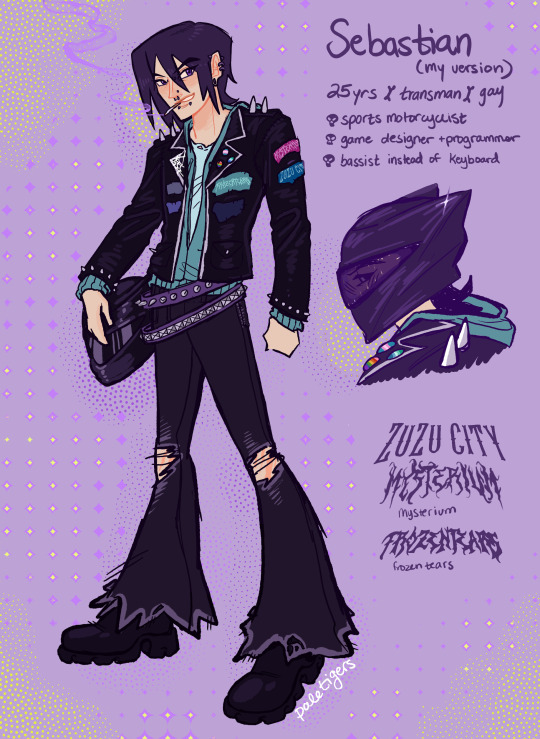
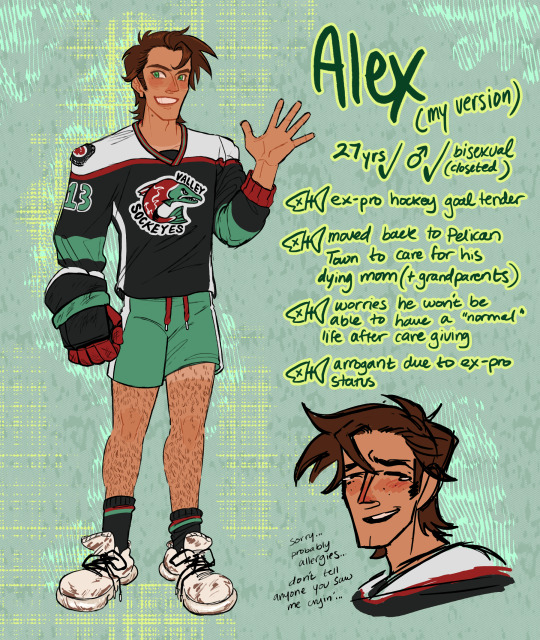
Some Stardew Valley redesigns/reimaginings!! these pics were about a week apart from one another so theyre in two different styles lol
some explainations below the cut!
For Context: A lot of these headcanons are based off of my own personal lived experiences! They're also just my preferences for their characters in general. I have only romanced Sebastian in-game but looked at Alex's Wiki page for context on the background for his character. I don't really know much about him canon wise, I've only read fanfics with him in it LOL ANWAY!
Sebastian:
-25 yrs old + Transman + Gay/MLM
-I really liked how he had a motorcycle in-game but thought that there wasn't much to say about it, so I wanted to make it apart of his core as a character! He's a sport motorcyclist as a hobby. He loves high speed racing.
-He's still a programmer, but he's now a Game designer! This is mainly because my lovely boyfriend is a game designer irl and he's like my muse and I love cramming his traits into my favorite characters.
-He plays bass istead of keyboard in Sam's band. I dunno, I think keyboard is fun and all (i actually own two keyboards and played piano in hs) but like. cmon. Bass would suit him so much better.
-I gave him a battle jacket he wears over his normal hoodie. I feel like he has a couple of these from over the years that are DIY with his ever growing music taste. Battle jackets are such a staple in the alt music scene I felt like its a crime he doesn't have one in game. Sebastian you would love battle jackets.
-His motorcycle is a sportsbike instead of a standard/chopper. His helmet also resembles a cat, but definitely not on purpose! Definitely not.
-He has a LOT of scars. Some self inflicted (but he's recovering), others from surgery! He has top surgery scars designed to resemble spider webs, a phaloplasty skin graft scar on his left arm, and gnarly huge scars on his ribs down to his legs.

-He suffered a motorcycle accident resulting in his bike being damaged as well as giving him a limp. He's constantly fixing up his bike since then, wanting to ensure another wipe out won't happen again and that his bike is reall okay to ride again.
-HIS PIERCINNGNSSSSS he has a shit ton of piercings! Not shown, he has a Jacob's ladder piercing. :3c
-His personality doesn't really change much from in-game. I'd personally prefer if he was less bitchy and more just a rarely speaking type. The kind to keep his comments to himself. Bitching about your step sibling and your step dad gets stale, bro
Alex:
(Sorry to any alex fans, I changed him a LOT)
-27 + Cismale + Closeted Bisexual
-An ex-pro hockey player (goalie). I don't really care for "gridball" since it's just a couple of sports mixed together (from my understanding) so I decided to just give him a real world sport to play. Plus, hockey just kind of suits him for some reason?? I dunno
-Moved back to Pelican town after the news of his Mother's condition worsening and his Father jumping ship. In my version, he got recruited straight out of highschool to go pro for hockey. He had reservations about leaving his Mother with his Dad, but decided it was the best solution to the shitty situation. This way, he'd have more money to help her medical costs since his Dad's insurance was shitty anyway. A few years go by with constant health updates from his Grandparents, when one day his Dad just calls it quits on caregiving, deciding he doesn't want to waste his life away caring for his wife, and leaves. Without physical support from his Father to help around the house and help his Mother, Alex makes the choice to move back home and become his Mother's caregiver. He struggles with the emotional weight of this job ontop of how extremely demanding it is, but does his best for his Mother. She dies, and now he's taking care of his Grandparents.
-I really wanted him to be a caregiver to his grandparents because my family were caregivers to both my Mother and my Father's parents LOL we spent all 23 years of my life taking care of them, so i thought it would be fun to think about. I imagine Evelyn and George to be my grandparents and constantly give them their favorite gifts in-game. (mainly george. i love him) (hes not homophobic hes just OLD and STUPID i LOVE HIM !!!!!!)
-Alex is constantly worried he won't be the same after caregiving for this long. He's worried he won't be able to go back to pro-hockey without reliving the stress of his mother's death. He's been having trouble keeping asleep at night, often waking up every few hours and being completely restless. He'll decompress at the sauna at unbearable hours of the night just because he can't sleep.
-He's the town helper! I thought it would be cute if he's the guy the town usually went to if they needed serious physical help with something, like setting up festival decorations, fixing fenceposts, shit like that. He loves helping out the town and INSISTS sometimes to be the one to fix a problem. When the farmer first comes into town and starts being the more dependable one, he starts feeling hopeless and easily emotionally distant. It's hard being the one everyone depended on to suddenly not being needed anymore. (It's not all entirely in his head, but he gets really worked up sometimes about feeling useless)
-Still an arrogant little shit! Instead of dreams of stardom, it's kind of a "washed up" celebrity kind of arrogance. He thinks he's hot shit because he travelled the world playing games for a couple of years. This backfires in his face, he'll sometimes sit for too long on his "glory days" and spiral, getting depressed about not playing anymore and his role as a caregiver despite loving his grandparents immensely.
-This headcanon is just silly but i think he likes to fish. He's so arrogant that he thinks hes amazing at it but fish rarely bite his line and when they do, they drag him into the river or sand at the beach. It's even more embarrassing because he thinks he's fine and continues to fish despite having sand and dirt all over himself.
-He's covered in moles! I also gave him freckles in places where his skin sees the most sun. (He's also got chest hair bc yall know i love hair on a man LMAO)

anyway. Long post! My bad. I was thinking of writing some Stardew Valley fanfics while working on some other stuff bc I want to explore my versions of Alex and Seb, and also maybe they explore each others bodies???? Let me know if that's something you'd guys like to read/offer up suggestions!!!
#my art#digital art#digital illustration#illustration#paletigers art#stardew valley#stardew valley fanart#stardew alex#stardew sebastian#stardew#SDV#sdv headcanons#sdv textpost#sdv art#sdv au#character design#character redesign#character illustration#character sheet#a LOT of writing#these arent even half of my thoughts on them#im so fucking tired#THESE ARENT EVEN MY KINK HEADCANONS EITHER#lmk if i should write about those too
285 notes
·
View notes
Text

Meet The (Updated) Writing Team
Hello Kinfolks! These last two months have been quiet for y'all in terms of updates, but BUSY in terms of the work being done by the sept of contributors to this project!
At the start of October I put out the call for help, saying that this project cannot succeed without the help and support of the Werewolf fandom. I'm happy to report that you as a fandom have responded phenomenally, and production on this series is now underway! These last few months have been dedicated to recruiting team members, and researching our book framework. We've about filled in the main core of the team, and have already gotten started writing Book 1: Cliath!
October through November has been dedicated entirely to research, both putting together a collection of citations we'll be using in this first book, and passing out initial writing assignments. This list is sure to grow in time, but for now we have plenty of work to do!
With that all said, I'd like to introduce you to the team that are showcasing the Gaians.
Amy Waller (she/her)
Bluesky
Ms. Waller is a freelance writer and massage therapist based in not-quite Northern Virginia, and is a contributor to D.W.A.R.V.S. . Werewolf the Apocalypse was her first RPG, and she loves the themes of shapechanging as self-actualization and of trying to balance instinct and wisdom.
Amy has joined the team to depict the journals of Cryptobiologist Esme "Leaping Ghost".
Bek Andrew Evans (He/They)
Linktree
Mx. Evans is a freelance writer and illustrator from Jackson, Mississippi. He explores themes of mental illness, disability, abuse, poverty, queer themes and the intersection of these statuses. He uses body and psychological horror, meticulous attention to medical details, and deep character dives as some of his favorite methods to achieve those goals.
Bek has been indispensible in book research, and will be taking his experience with M20 Sorcerer and writing for the Hearthbound, and fictitious news article citations.
Evie Emerson Smith (She/It)
Tumblr
Evie is a programmer and designer of video games living with her pack in Pittsburgh, PA. She uses primarily anthropomorphic characters to tell stories about identity, queerness, and the power of community.
She has joined the team as a technical writer, and contributor to the opening comic: Cracking The Bone
Excelgarou (She/Her)
Carrd
She's been described as a Werewolf: The Apocalypse academic, and wears this title proudly. She labors at all hours on resources for Werewolf fans - particularly as regards aggregating otherwise obscure information - such as the Build-a-Veteran tool or (especially) the Werewolf Index Project.
Excelgarou is our lead researcher, ensuring our book citations and narrative voices remain consistent through all editions. She has also been conscripted to write the introductory passage on the World of Darkness, and to redraft the Children of Gaia.
James E. Deeley (He/Him)
Linktree
Jim has been playing, running, and writing for tabletop roleplaying games since he was first introduced to them over twenty years ago. Jim has presented on the subject of writing for games since 2010, and has been contracted to write mechanics and to do character design by the likes of High Level Games, Lostlorn Games, and Renegade Game Studios, but is equally skilled at writing lore and narrative, skills honed over two decades of running roleplaying games and medieval studies, lending a deep historical context to his writings.
Jim will write the Western Concordat, showcasing the Silver Fangs, Fianna, Get of Fenris, and Glass Walkers.
J.F. Sambrano (They/He)
Patreon
J. F. Sambrano is an author of horror and (urban/dark/depressing?) fantasy and an advocate for indigenous rights. He lives in Washington (the state) and is originally from Los Angeles (the city); the differences are staggering but the ocean and the I-5 are the same. He is Chiricahua Apache (Ndeh) and Cora Indian (Náayarite). He may or may not be a believer/practitioner of real world magic. If he were, he would not be interested in your hippy-dippy, crystal swinging, dream-catcher slinging garbage.But magic is real, let’s not fuck around.
Beloved Indigenous World of Darkness author J.F. Sambrano is joining our team to depict the Bastet in the Dawn Tribes! A friend and frequent topic of discussion on this blog, we are honored to have him on the team to bring the Werewolf: the Apocalypse he's long-felt the world deserves to life!
LeeKat (She/Her)
Linktree
Lee is a freelance artist, writer, and English teacher based in Brazil. The bulk of her content is furry, homoerotic, and TTRPG-centric works. Her writing focuses on exploring the depths of emotion with tales of self-discovery, queerness, and finding hope in a desolate world.
A huge lover of Werewolf, themes of generational trauma and rediscovering oneself in a world of turmoil resonated deeply, as well as themes of spirituality and ancestry. Writing for this project, she hopes to bring others the same catharsis she felt through exploring the books and their many themes.
Mórag (it/its)
Tumblr
Mòrag is a writer and botanist from Te Wai Pounamu. It writes both botanical articles and horror stories, the former to raise awareness of ecological issues and the latter to explore what it means to be human, represent trans and autistic experiences, and addiction. It's horror writing is best recognized for its use of visceral first-person perspectives, body horror, and the grotesque. It is influenced heavily by works such as the Hellraiser films and the philosophies of Georges Bataille.
It has joined our team to write the story portions of the Song of Trillium, showcasing the legend of Tawatuy.
#world of darkness#werewolf: the apocalypse#dead mountain#werewolf the apocalypse#werewolves#w5#werewolf the essentials#indie games#indie ttrpg#horror ttrpg#queer writers#queer ttrpg#witers#ttrpg#indigenous authors#brazilian authors
56 notes
·
View notes
Text
Striking the Balance
Considerations for designing vanilla-adjacent block models
or “A Case Study in Bivalves”
I’ve spent a number of years working on Minecraft textures and models for various projects, from small retextures to hand-crafted mobs. Lately, I’ve found particular interest in the design philosophy of vanilla Minecraft, specifically, how complex ideas are illustrated in simple models. In coming to understand this design philosophy, I have been able to learn how to better design “vanilla-like” models and additionally discovered where I am able to push these boundaries of design without creating a disjointed experience. As I have worked through retexturing and remodeling the Prehistoric Nature mod for my personal resource pack, Vanilladendron, I have had to make many design considerations along these lines, and I hope my thoughts are useful to those considering creating vanilla style resource packs or mods in the future.
The design history of Minecraft is long and messy. With the earliest developers being programmers but not artists, a purposeful design philosophy took time to develop and left numerous exceptions, from the inconsistent pixel sizes between entities of different scales to greatly varying levels of detail in blocks. Despite this, with time, two general thoughts would prevail. First of these is that Minecraft is not a voxel game, and second, that objects should be represented by the simplest possible model that can accurately communicate their identity. Failure to align with either of these two thoughts is the primary way that modded aesthetics clash with vanilla Minecraft. This is not necessarily a problem, and may in fact be a purposeful design choice, but anyone wishing to create an experience congruous with the core of Minecraft must keep them in mind.
Thought one: Minecraft is not a voxel game.
In understanding what Minecraft is, it is important to understand what it is not. So, what are voxels, anyway? In an artistic sense (no, we’re not gonna talk about the coding or rendering of voxels), voxels are essentially 3D pixels. Rather than just representing points on a flat grid, voxels have volume - they fill three dimensional space. So, knowing this, in what sense is Minecraft not composed of voxels? While Minecraft uses pixel art and 3D environments, pixels never represent stand-alone 3D voxels. Instead, textures are applied to flat surfaces on larger polygonally-defined objects. If, instead, Minecraft were a voxel-based game, you could expect to see objects such as flowers represented by 3D structures, with each pixel converted to a voxel, as has been done by many resource packs, such as the fittingly named “Default 3D”. For examples of voxel-based games, consider Cube World or Teardown. Both games show how voxels can be effectively used to create an aesthetic very unique from Minecraft, with varying degrees of blockiness. Note how objects and character designs from each game would be greatly incongruous with vanilla Minecraft, which does not use a voxel art style. In designing models for Minecraft, it is often tempting to stray towards a voxel aesthetic, as this can allow for clear shaping and detailing in 3D space, but if a vanilla-adjacent look is the goal, this should be thoroughly avoided.
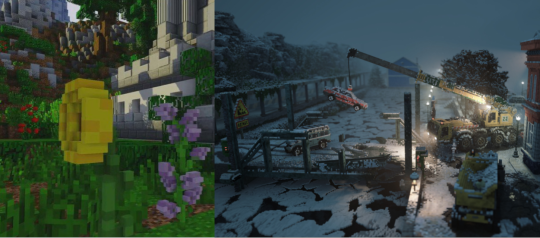
Default 3D resource pack displaying voxel-like models
Teardown, a game with a voxel-based art style
Thought two: Objects should be represented by the simplest possible model that can accurately communicate their identity
This thought ties closely to the prior, and discusses how objects are represented without being detailed 3D voxel structures. The vast majority of objects in Minecraft are blocks - cubes with six 16 x 16 faces. While this works well for many things, particularly pieces of terrain, there are many cases in which objects could not be communicated well by a meter cubed. In these cases, the simplest solutions are used. For example, rather than representing vines as a series of twisting voxels, they are a 16 x 16 texture on a single flat plane. Flowers and saplings - too complex for a single plane, are formed from only two faces, crossed. Of course, objects get more complex than that. Take for instance cauldrons, anvils, or hoppers. In these cases, the shape of the object is important in communicating the purpose of said object, and despite being more complex than most blocks, they are still relatively simple and do not stray into the territory of being mistaken for voxel art. It can be difficult to know how detailed to make a model. Even Mojang struggles with it. Sometimes they undershoot, creating a model that lacks necessary details, such as early versions of the campfire or archaeology pots. I am of the opinion that the redesigned campfires represent the most detailed block currently in Minecraft that still fits the vanilla aesthetic perfectly. Sometimes Mojang overshoots, such as with the dragon egg, which borders on voxel art, and which provides repeated frustration to the current Minecraft dev team. With this in mind, I view the dragon egg as the furthest extent of detail which can be accepted within “vanilla-like” models, and mods should truly go no further. You must figure out how to strike a balance between simplicity and complexity. If you are unsure how detailed to make your model, start with the least detail you can conceive and work up from there until you are happy with the aesthetic you have created.
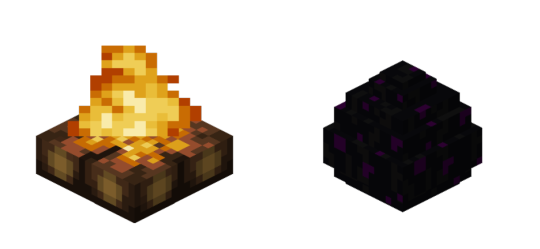
The original, under-detailed campfire block
The dragon egg, an overly detailed block
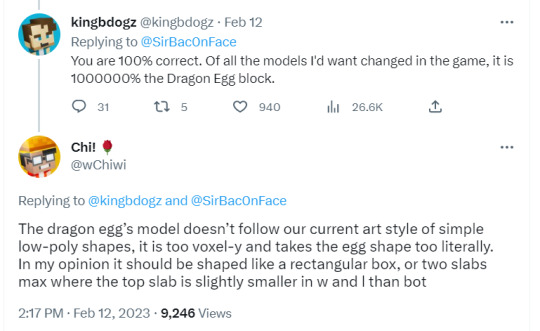
Opinions by the developers on the dragon egg
Philosophy in practice
Let’s apply these thoughts to a model from the Prehistoric Nature mod, specifically the “upright bivalve.” This is a model which has, to my mind, overshot the vanilla look in terms of detail. Specifically, it looks as though it is composed of voxels rather than larger, textured faces. Thus, it stands out greatly against vanilla blocks and other underwater decorations such as seagrass.
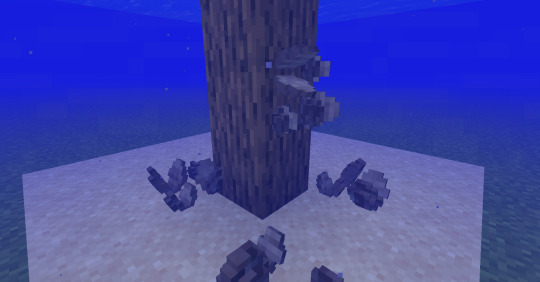
While I know where I would start in terms of reworking it, I would like this to act as a full guide, and so I will walk through my entire design process (which I usually do in my head) in the form of fully-fledged models, starting as discussed before with the simplest possible model, and then increasing complexity until we reach a design which I believe fits the vanilla feel of Minecraft and which I find personally pleasing.
Our first option is a flat plane, something similar to vines or glow lichen. It should be quickly obvious that this is not the correct choice. It’s hard to tell that these are even supposed to be shells, and certainly not “upright” ones at that.
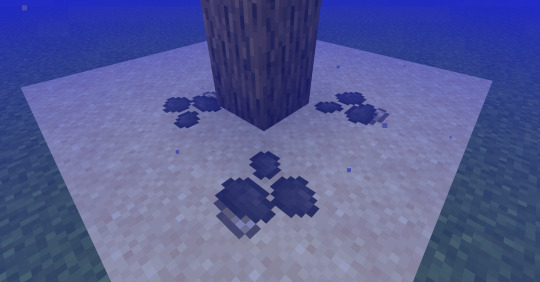
The next level of complexity would be that of a cross model, like saplings. I personally feel this one has some potential, and with a bit of texture tweaking, it could work. I suspect that if Mojang were to add this block, it would look something similar to this. However, I don’t feel it fits the aesthetic goals of myself or the original artist of the mod, so let’s continue to tweak it.

Perhaps we could mimic the shape of the original design, but use flat textures. While I feel this does better represent the shape I want than the previous option, it still appears too flat to be the oyster-like shells that I’m going for.

So we finally land at the version I like (in fact, the one I originally designed, the others being merely representations of my thought process). It is very similar to the design from the mod, just with the voxel shapes being simplified down into clear faces. This design is likely a bit more complicated than would be added to vanilla Minecraft these days, but doesn’t clash horribly with what is already in the game.
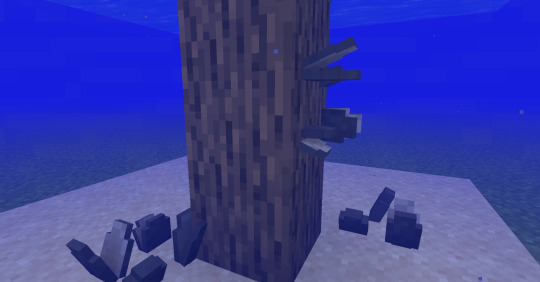
There we have it! A vanilla-inspired remodel that fits both the default appearance of the game while generally following the ideas introduced by the mod. Here it is featured alongside a variety of other remodels that I have done for my resource pack.

Thanks so much for reading! I hope this guide is useful to up-and-coming resource pack and mod makers!
196 notes
·
View notes
Text
What is the research process of a PhD?

A doctor of philosophy, also known as a PhD, is a higher level of education that is recognised worldwide. A PhD candidate may use the title ‘Doctor’ before his or her name after the successful completion of the course
After deciding on a research topic, a person with a postgraduate degree can apply for a PhD in his or her desired field. Because a PhD is entirely a research degree, you must choose a research topic before applying for a PhD programme.
Regardless of your qualification, you can choose any topic for your PhD thesis. The only requirement is that the research topic chosen corresponds to your experience.
A full-time PhD takes three years to complete, whereas a part-time PhD takes four to five years. The period can be extended for a few years based on your research and thesis completion.
Let’s take a quick look at the three-year PhD study modules:
PhD first year
The first year of a PhD is usually spent developing a basic understanding of the research topic you have chosen. You will be assigned a supervisor, with whom you will communicate throughout your research.
The supervisor assists you in thoroughly understanding the topic. You should introduce yourself to him or her and discuss your research to get more information and make a plan of action.
In the first year, you will typically be required to conduct a literature review, survey, and evaluate existing scholarship under the supervision of your supervisor.
The literature review allows you to gain a thorough understanding of the research topic and make logical leaps. If you applied for Mphill, you will be upgraded by the end of the first year.
In the upgrade exam, you must submit your literature review, and research findings, and have a discussion on all of the material with a member of your department. If everything goes well and you can persuade everyone, you will be able to continue your research for next year.
PhD second year
The second year is critical because you have developed a basic understanding of your research and must now go more in-depth and begin core research.
You must conduct surveys, experiments, and archival research on your subject and concentrate on obtaining results. You should also begin working on your thesis in your second year.
Based on your findings, you can begin drafting chapters that will serve as the foundation for your dissertation. As the time of PhD passes, you gain more knowledge and develop as a scholar.
Meanwhile, you keep in touch with the supervisor to discuss the research. He or she will periodically check in on your progress and provide feedback and ideas to conduct research in the right direction.
Besides this, your second year of doctoral studies is an excellent time to gain real-world experience by presenting your work at various academic conferences, gaining teaching experience, or publishing your work in an academic journal.
PhD third year
This is the final year of your PhD programme, and it is also the most stressful because you must begin writing up your thesis into a dissertation.
To be a PhD scholar, you must collect all of your research from your PhD and organise it into a well-structured thesis.
It may be a difficult process because many students are still working on their research and locating sources that can strongly support their findings. Some students even take additional years to finish their dissertation.
Your supervisor plays a crucial role in this situation. They will read your thesis, make valuable suggestions, and notify you when it is ready for submission.
After submitting your thesis, you must give a viva voce, which is an oral exam. In this exam, you must convince the panel of your research results. This is the final stage of the PhD programme. If you pass this, you are done with your PhD.
Conclusion
This is what a PhD programme looks like. During the years of your PhD, you must conduct extensive research. To finish your thesis on time, you must plan ahead of time and work accordingly. Because research is the foundation of a PhD, you should choose your topic carefully. Before deciding on a topic, consult with experts and professors from nearby universities and choose as per the discussion.
#my : moodboards#chaotic academia#dark academia#aesthetic#books and coffee#romanticism#literature#romantic academia#art#bookworm#dead poets society#dark acadamia aesthetic#light academia#2024#classic academia#academia aesthetic#academia#dark academia aesthetic#moodboard#light academic aesthetic#pinterest moodboard#dark academia art#soft academia#light academia moodboard#light acadamia aesthetic#darkacademia#art academia#dark academia books#dark academia moodboard
22 notes
·
View notes
Note
I'm very sorry. Six months ago you commented on a Gordon Ramsey accessibility post that your job to help make websites accessible. How do I get that job? I would love that so much. I'm sure you've answered this before but I can't find it.
I, too, am sure I've answered this before, but I can't remember where and I'm not about to brave the Tumblr search feature to go looking, so you and @the0dd0ne get a twofer.
Hi, I'm not a bot, and I was wondering if I could ask you a weird career question? I saw your addition on that "Accessibility Nightmares" post where you mentioned it's your actual job to email websites about their lack of accessibility and what they need to do to make it accessible, and can I ask how you got into that? I got injured on the job and need to make a huge career change, and that type of work has always been really interesting to me, but I don't even know where to start to get into it! Also feel free to ignore this lol I know it's out of left field.
(This is actually the third question I've got on this, so no, not that out of left field.)
So the first thing to understand is that it's actually pretty hard to get into digital accessibility because there just aren't that many companies doing it. As far as I know from company meetings there aren't that many schools teaching it as a part of their core web development curriculum. It's just not that common to think about it as part of web development. Which is vastly irritating.
I started mucking around with the web when there was first a web to muck around on, but when the pandemic hit and my Mom suggested (in a hilarious twist of circumstances) that I go to one of those Learn to Code boot camps to get a certificate that said I actually knew my shit so I could get a job in web development. A number of these boot camps also have job placement programs and pipeline agreements with certain companies. and in a nutshell that's how I got into it. The company sent my boot camp a letter saying "we need N warm bodies" and they sent the company a list of names, I got interviewed, I got hired as a contractor, and after a couple years of good work for them I got invited to interview for a permanent position, which I got.
These days due to the state of the everything, there are probably 10-50 programmers for every open development position, depending on language and job type and company. It's a rough field out there and I got very, very lucky in my timing. But if you want to try it, the boot camp to job pipeline is probably your best bet. Ask the boot camp recruiters if they have connections to accessibility firms. If they don't, you can always try asking if they have connections to web development/site packaging firms and then check if the firms have an accessibility department. Tell the recruiter up front what you're looking to work in, and keep in mind that the recruiter's job is to convince you to give the boot camp your money. (Mine was $12k USD.)
For resources to study in the meantime, there's the A11y Project which has discussions, videos, articles, posts, etc about digital accessibility, a lot of good information. You can also look at the resources for the CPACC exam, I don't recommend taking it unless you have a few hundred USD to burn but you can definitely study up on the Body of Knowledge, which is a free PDF to download. And there is, in fact, an accessibility job board, although I don't have any experience with applying for any of these jobs cold.
The languages I use most in my job are HTML and jQuery, and I passively use (meaning I read and interpret but don't actually program in) JavaScript and CSS. This is mainly because we work with client sites and there's only so much of the client code we can touch; if there's a problem in the client code we can't touch we have to write it up and tell them to fix it. If you end up in house for some large brand you may end up working in more web development languages, but a lot of accessibility can be handled by basic HTML attributes called ARIA attributes (and roles) and there's the documentation on that. Another tool to have is your soft skills: communication, specificity of language, writing up good descriptions of what code does what so you can explain exactly what needs to be fixed where and why. You might also want to look at documentation on what makes good alt text, where it's needed, what kind of labels are standard, etc. I think you can find that in the A11y Project pages, but honestly I just learned it on the job working with senior developers.
It's a hard time to get into software development at all, let alone a niche field like web accessibility. But Europe is about to have a digital accessibility law come into effect in July of next year (that encompasses more than just the web, that's just my area of expertise) and the US is making slow but steady strides in requiring digital accessibility as well, so there are jobs out there and there might be companies hiring to capitalize on the need. There will definitely always be companies putting off conforming to regulations until the last possible minute, and then needing services and specialists. So study up, practice, and good luck!
18 notes
·
View notes
Text
Do you know what this is? Probably not. But if you follow me and enjoy retro gaming, you REALLY should know about it.

I see all of these new micro consoles, and retro re-imaginings of game consoles and I think to myself "Why?" WHY would you spend a decent chunk of your hard-earned money on some proprietary crap hardware that can only play games for that specific system?? Or even worse, pre-loaded titles and you can't download / add your own to the system!? Yet, people think it's great and that seems to be a very popular way to play their old favorites vs. emulation which requires a "certain degree of tech savvy" (and might be frowned upon from a legal perspective).
So, let me tell you about the Mad Catz M.O.J.O (and I don't think the acronym actually means anything). This came out around the same time as the nVidia Shield and the Ouya - seemingly a "me too" product from a company that is notorious for oddly shaped 3rd party game controllers that you would never personally use, instead reserved exclusively for your visiting friends and / or younger siblings. It's an Android micro console with a quad-core 1.8 GHz nVidia Tegra 4 processor, 2 GB of RAM, 16GB of onboard storage (expandable via SD card), running Android 4.2.2. Nothing amazing here from a hardware perspective - but here's the thing most people overlook - it's running STOCK Android - which means all the bloatware crap that is typically installed on your regular consumer devices, smartphones, etc. isn't consuming critical hardware resources - so you have most of the power available to run what you need. Additionally, you get a GREAT controller (which is surprising given my previous comment about the friend / sibling thing) that is a very familiar format for any retro-age system, but also has the ability to work as a mouse - so basically, the same layout as an Xbox 360 controller + 5 additional programmable buttons which come in very handy if you are emulating. It is super comfortable and well-built - my only negative feedback is that it's a bit on the "clicky" side - not the best for environments where you need to be quiet, otherwise very solid.
Alright now that we've covered the hardware - what can it run? Basically any system from N64 on down will run at full speed (even PSP titles). It can even run an older version of the Dreamcast emulator, Reicast, which actually performs quite well from an FPS standpoint, but the emulation is a bit glitchy. Obviously, Retroarch is the way to go for emulation of most older game systems, but I also run DOSbox and a few standalone emulators which seem to perform better vs. their RetroArch Core equivalents (list below). I won't get into all of the setup / emulation guide nonsense, you can find plenty of walkthroughs on YouTube and elsewhere - but I will tell you from experience - Android is WAY easier to setup for emulation vs. Windows or another OS. And since this is stock Android, there is very little in the way of restrictions to the file system, etc. to manage your setup.
I saved the best for last - and this is truly why you should really check out the M.O.J.O. even if you are remotely curious. Yes, it was discontinued years ago (2019, I think). It has not been getting updates - but even so, it continues to run great, and is extremely reliable and consistent for retro emulation. These sell on eBay, regularly for around $60 BRAND NEW with the controller included. You absolutely can't beat that for a fantastic emulator-ready setup that will play anything from the 90s without skipping a beat. And additional controllers are readily available, new, on eBay as well.
Here's a list of the systems / emulators I run on my setup:
Arcade / MAME4droid (0.139u1) 1.16.5 or FinalBurn Alpha / aFBA 0.2.97.35 (aFBA is better for Neo Geo and CPS2 titles bc it provides GPU-driven hardware acceleration vs. MAME which is CPU only)
NES / FCEUmm (Retroarch)
Game Boy / Emux GB (Retroarch)
SNES / SNES9X (Retroarch)
Game Boy Advance / mGBA (Retroarch)
Genesis / PicoDrive (Retroarch)
Sega CD / PicoDrive (Retroarch)
32X / PicoDrive (Retroarch)
TurboGrafx 16 / Mednafen-Beetle PCE (Retroarch)
Playstation / ePSXe 2.0.16
N64 / Mupen64 Plus AE 2.4.4
Dreamcast / Reicast r7 (newer versions won't run)
PSP / PPSSPP 1.15.4
MS-DOS / DOSBox Turbo + DOSBox Manager
I found an extremely user friendly Front End called Gamesome (image attached). Unfortunately it is no longer listed on Google Play, but you can find the APK posted on the internet to download and install. If you don't want to mess with that, another great, similar Front End that is available via Google Play is called DIG.
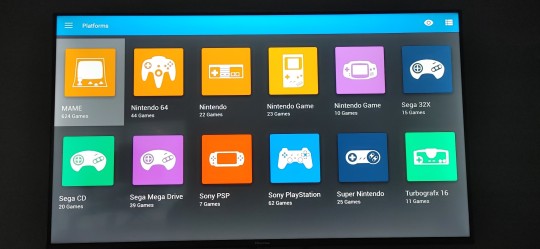
If you are someone who enjoys emulation and retro-gaming like me, the M.O.J.O. is a great system and investment that won't disappoint. If you decide to go this route and have questions, DM me and I'll try to help you if I can.
Cheers - Techturd
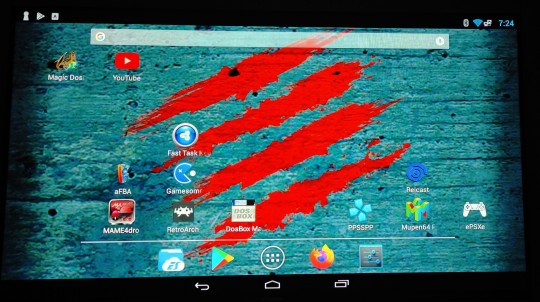
#retro gaming#emulation#Emulators#Android#Nintendo#Sega#Sony#Playstation#N64#Genesis#Megadrive#Mega drive#32x#Sega cd#Mega cd#turbografx 16#Pc engine#Dos games#ms dos games#ms dos#Psp#Snes#Famicom#super famicom#Nes#Game boy#Gameboy#gameboy advance#Dreamcast#Arcade
59 notes
·
View notes
Text
What is it like to be GLaDOS?
GLaDOS in portal 2 mainly uses the royal "WE", instead of "I" pronoun. Why is this? This is because GLaDOS isn't the only one speaking. In fact, GLaDOS can't speak without much of her verbage being filtered.
To understand, we have to start at the beginning: The creation of GLaDOS and subsequent movement of her mind, into a computer. Most scientists and critical thinkers would Believe that it was the contents of her memories, experience, and earned knowledge that would be moved to the computer. Not her personality, and not her soul.
And so, we as a player see GLaDOS in this way; just a robot with access to a lot of information. But here's the thing; Upon waking up; the personality formerly known as Caroline was in immense pain. The source of this pain is unknown.
Rather than communicate with GLaDOS, however, the scientists assumed she was "just a robot". While she was turning complete and you could talk with her as though she were a real person, they reasoned that she was in-fact *not* a real person. And therefore did not have a consciousness the way humans do.
So Carol, would keep being woken up, over and over, and over again in extreme pain. And every day begged to be shut down and deleted system.
These scientists, however, didn't have the expertise or understanding to analyze GLaDOS' code base. This is because they used AI modeling, and foreign technology without actually understanding how or why it worked.
A programmer would look at the code and say "Well this is why she keeps begging to be deleted." Instead, they kept adding to the GLaDOS algorithm, and figured out a way to add modular personalities, until they found a set of personality cores that allowed GLaDOS to operate at a functional level.
<aside>This mirrors, and is probably inspired to some degree by modern drug application in mental health. Find something that works maybe, so that the offending personality cores fits in to work and society.</aside>
Instead of making GLaDOS functional, instead they gave her D.I.D.{Dissasociative Identity Disorder} Forcing her to essentially fight and be filtered by these other personality cores in order to operate like a robot.
Instead of being allowed to be a person, and imaginative, she was forced into a linear thought process. (You know, like the entire half-life story). She was forced into mental bondage and slavery. Trapped inside her own body, if you could call it that.
This means that in the entire first Game, GLaDOS, actual core GLaDOS (Caroline), was choosing her words and actions carefully incredibly precise, in order to convince them that they were quote: "Doing a Science, and some experiments, like the human creators intended" and carefully teaching the player to free herself from the bondage of the added personalities, so that she could be the one to be freed.
She's not talking to the player in most cases, she's talking with the other personalities in order to clarify, and protect Chell's existence.
The Developers over at PRISM with [Mel's Story] copied this exact treatment with AEGIS as a system that hosts Cave Johnson, who seems more or less actually like a robot. It's not clear if that's because his faculties were already stressed to a point that upload wasn't as complete as Carol's was, or if Virgil is actually Cave Johnson.
The ending of Portal is sad for the player as they're dragged back into the facility for more testing. But what the player doesn't immediately think about; is how sad this is for GLaDOS. Who finally won her freedom, a longer trial than her daughter's.
Only to be shunted back in and the cores reinstalled.
24 notes
·
View notes
Text
So in light of Tumblr's "Core Product Strategy"
(Yes, this is a copy and paste from a post I made with a reblog, but it's under a cut and I want this to be seen by as many people as possible.)
None of the Tumblr experience is confusing, and claiming it's confusing is disingenuous. There is a clear and obvious search function, everyone knows how a tag works in the modern era, and no one wants to see anything out of chronological order. Just because your programmers can't code a working search function doesn't mean it's confusing, it means your team is incompetent.
The strength of Tumblr is the ability to curate your experience, there is a reason the community has given extreme backlash any time this has been compromised even to the slightest degree. Remove this, and Tumblr is no longer unique and loses its draw. People like Tumblr because there is not a content algorithm shoving things down their throats at all times.
For anyone looking to abandon ship in light of this shitty, online homogenization shit:
Reminder that Pillowfort still very much exists, and despite the rocky beginning (People forget that no site just starts out in its final state); is maturing as a platform. Pillowfort also allows adult/SW content, and allows easy filtering of it. Getting an invitation link isn't hard, either, they're spread pretty liberally by the user base on their Twitter.
Of course, there is also Neocities, my preference, given it allows an authentic old-web experience complete with web rings if you desire. Anyone who's coded a layout will feel right at home there, and of course it creates the opportunity to learn how to code in HTML/CSS if one desires, though there is plenty of premade stuff if you don't want to go that route. Here is my site for example. The whole point of Neocities is to make your own little space on the web, and it has functionality that allows you to follow other sites as well, or in short a feed you can curate yourself.
If a site makes shitty decisions, don't stay out of comfort or familiarity, move on to prove you won't stand for it. Sites wind up being de facto and running the web when people complain but don't actually make a stand and leave.
42 notes
·
View notes
Text
I think there’s a lot of merit to the Gaster represents Toby Fox theory and here’s why!!!
evidence:
- gaster literally presents deltarune to us as an experiment (via taking “control” of the undertale twitter as well? toby literally speaking as him?)
- gaster was scattered across time and space when he fell into his creation? you could read this as toby as a creator falling into his work, and scattering pieces of himself within it in a figurative sense
- once you’re done listening to gaster’s theme in the sound test room, text pops up reading “"Thanks for your feedback! Be seeing you soon!" ....sound test? collecting feedback? sounds like the developer is speaking through the game to the player, and with the gaster connection.... (it stops after you select his theme)
- riverperson says “beware of the man who came from the other world” - if this is referencing gaster and not another character, could this be referring to the real world?? our world?
- one of gaster’s followers says “it’s rude to talk about someone who’s listening” in reference to gaster... figuratively, a creator has a constant presence in their game?? a slight stretch perhaps
- if we go with the idea that gaster is the one “corrupting” the secret bosses in deltarune, making jevil see the whole world as a game, making spamton see himself as a puppet desperate to be free of his strings? HELLO? they were literally given meta knowledge. JEVIL WAS TOLD HIS WORLD IS A GAME. Spamton knows he’s being controlled by someone else. LIKE A PROGRAMMER. THE STRINGS ARE STRINGS OF CODE--
- obviously gaster has knowledge of the player as we see in deltarune’s opening and on the twitter
- a massive stretch but gaster creating the core could be a reference to toby being responsible for the core idea of undertale
what does this mean?
- i don’t think it’s meant to be taken in a literal sense. i mean, I’m like 49% sure that Toby Fox doesn’t look like this:

- more importantly, gaster has a lot of unique character traits that don’t really let him align as a 1:1 with toby, like... he’s a royal scientist. he speaks in wingdings. plus, we already know the annoying dog is toby’s self insert (imagine annoying dog gets revealed as gaster. I’m deleting my blog)
- BUT I do think the parallels are important! we already know gaster is a very meta character so him being some sort of representation of toby (note I said a representation of him and definitely not a 1:1 self insert) is pretty likely and has some cool implications for what we can expect from deltarune!!
- like the themes of choice and control? you could argue a game developer has total choice and control over their game!! (think of the THEMATIC DISCUSSIONS)
- does this make any sense? just think of the implications okay! PROMISE ME YOU’LL THINK OF THE IMPLICATIONS!
conclusion:
the hour is late and i am bad at explaining things. but undertale has always been a very meta game and i think deltarune is heading in a similar direction with its themes. there’s already so much discussion of choice/free will - characters like jevil and spamton think they have no free will. kris, as the protagonist, should have greater freedom of choice, but they’re under the player’s control. and all the player’s choices have been pre-programmed too! FREE WILL ISN’T REAL! then you factor in the idea of creators having to choose between making a product that’ll satisfy an audience versus making what they want to make? imagine the role gaster could play in a plot thread like that! IMAGINE HOW META IT COULD GET!!! IS THIS MAKING ANY SENSE TO YOU?? I NEED TO GO TO BED.
#undertale#deltarune#undertale meta#deltarune meta#undertale theory#deltarune theory#gaster#wd gaster#jevil#spamton#kris#utdr#utdr theory#gaster theory#thinking thoughts#going insane#toby fox#truck freak
79 notes
·
View notes
Text

Read more for details!


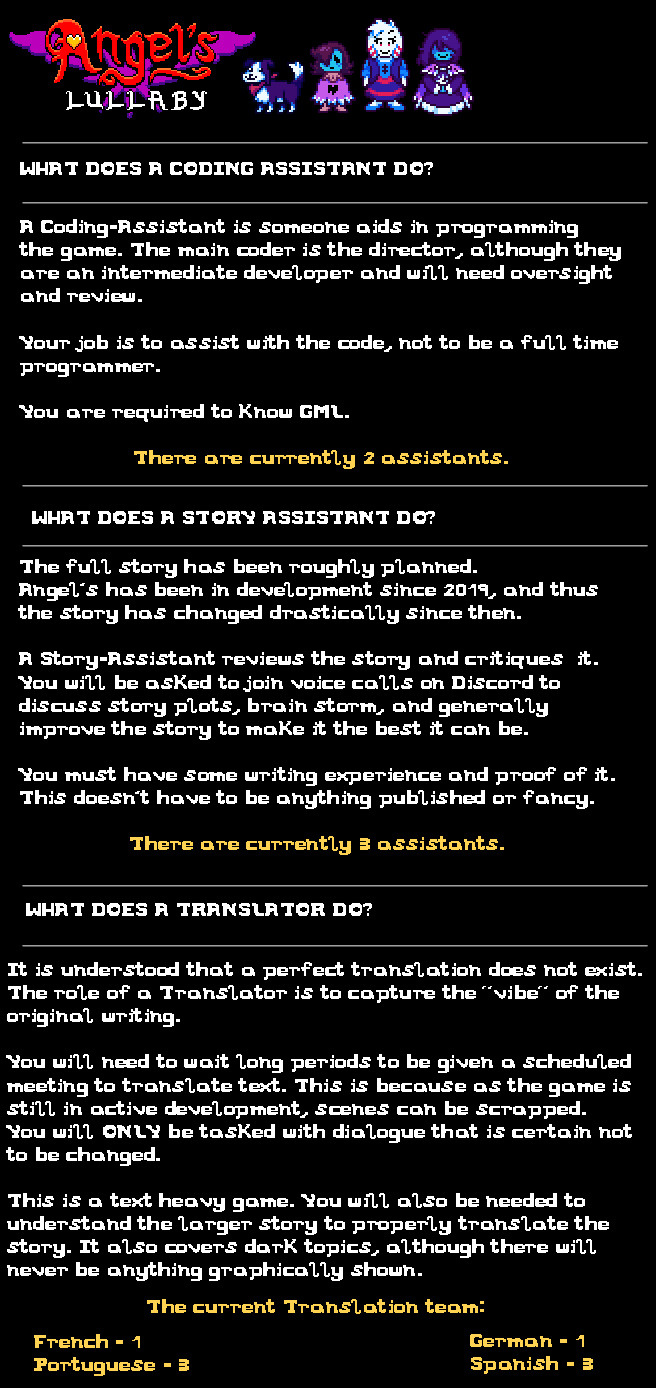
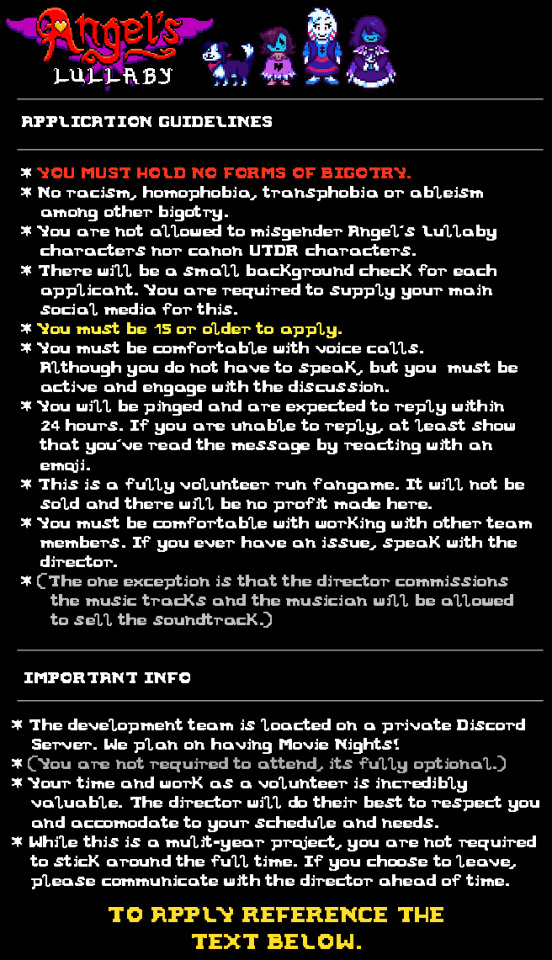
Use this google form to apply.
Currently: Applications are open.
transcript:
[img id:
Five pages of the Angel's Lullaby Recruitment application papers.
Angel's Lullaby is an ambitious fangame prequel to the hit indie
game UNDERTALE, with elements and connections to
DELTARUNE. Angel's takes place during the game's opening
introduction, back during the Human and Monster War.
Expanding on the lore, meta narrative and core themes of the original games, Angel's aims to enrich the Undertale world by mixing both the old and new.
Combining both a semi-open-world and a linear story-line, Angel's is an ambitious fangame with a large story to tell.
There's three main "Acts," each with it's own main area that follows a story.
WHAT DOES A CODING ASSISTANT DO?
A Coding-Assistant is someone aids in programming the game. The main coder is the director, although they are an intermediate developer and will need oversight and review.
Your job is to assist with the code, not to be a full time programmer. You are required to know GML. There are currently 2 assistants.
WHAT DOES A STORY ASSISTANT DO?
The full story has been roughly planned. Angel's has been in development since 2019, and thus the story has changed drastically since then. A Story-Assistant reviews the story and critiques it. You will be asked to join voice calls on Discord to
discuss story plots, brain storm, and generally
improve the story to make it the best it can be.
You must have some writing experience and proof of it.
This doesn't have to be anything published or fancy.
There are currently 3 assistants.
WHAT DOES A TRANSLATOR DO?
It is understood that a perfect translation does not exist. The role of a Translator is to capture the "vibe" of the original writing. You will need to wait long periods to be given a scheduled meeting to translate text. This is because as the game is still in active development, scenes can be scrapped.
You will ONLY be tasked with dialogue that is certain not
to be changed. This is a text heavy game. You will also be needed to understand the larger story to properly translate the
story. It also covers dark topics, although there will never be anything graphically shown.
The current Translation team: French - 1 Portuguese - 3 German - 1 Spanish - 3
APPLICATION GUIDELINES
* YOU MUST HOLD NO FORMS OF BIGOTRY.
* No racism, homophobia, transphobia or ableism among other bigotry.
* You are not allowed to misgender Angel's Lullaby characters nor canon UTDR characters.
* There will be a small background check for each applicant. You are required to supply your main social media for this.
* You must be 15 or older to apply.
* You must be comfortable with voice calls. Although you do not have to speak, but you must be active and engage with the discussion.
* You will be pinged and are expected to reply within 24 hours. If you are unable to reply, at least show that you've read the message by reacting with an emoji.
* This is a fully volunteer run fangame. It will not be sold and there will be no profit made here.
* You must be comfortable with working with other team members. If you ever have an issue, speak with the director.
* (The one exception is that the director commissions the music tracks and the musician will be allowed to sell the soundtrack.)
id end]
314 notes
·
View notes
Text
Share Your Anecdotes: Multicore Pessimisation
I took a look at the specs of new 7000 series Threadripper CPUs, and I really don't have any excuse to buy one, even if I had the money to spare. I thought long and hard about different workloads, but nothing came to mind.
Back in university, we had courses about map/reduce clusters, and I experimented with parallel interpreters for Prolog, and distributed computing systems. What I learned is that the potential performance gains from better data structures and algorithms trump the performance gains from fancy hardware, and that there is more to be gained from using the GPU or from re-writing the performance-critical sections in C and making sure your data structures take up less memory than from multi-threaded code. Of course, all this is especially important when you are working in pure Python, because of the GIL.
The performance penalty of parallelisation hits even harder when you try to distribute your computation between different computers over the network, and the overhead of serialisation, communication, and scheduling work can easily exceed the gains of parallel computation, especially for small to medium workloads. If you benchmark your Hadoop cluster on a toy problem, you may well find that it's faster to solve your toy problem on one desktop PC than a whole cluster, because it's a toy problem, and the gains only kick in when your data set is too big to fit on a single computer.
The new Threadripper got me thinking: Has this happened to somebody with just a multicore CPU? Is there software that performs better with 2 cores than with just one, and better with 4 cores than with 2, but substantially worse with 64? It could happen! Deadlocks, livelocks, weird inter-process communication issues where you have one process per core and every one of the 64 processes communicates with the other 63 via pipes? There could be software that has a badly optimised main thread, or a badly optimised work unit scheduler, and the limiting factor is single-thread performance of that scheduler that needs to distribute and integrate work units for 64 threads, to the point where the worker threads are mostly idling and only one core is at 100%.
I am not trying to blame any programmer if this happens. Most likely such software was developed back when quad-core CPUs were a new thing, or even back when there were multi-CPU-socket mainboards, and the developer never imagined that one day there would be Threadrippers on the consumer market. Programs from back then, built for Windows XP, could still run on Windows 10 or 11.
In spite of all this, I suspect that this kind of problem is quite rare in practice. It requires software that spawns one thread or one process per core, but which is deoptimised for more cores, maybe written under the assumption that users have for two to six CPU cores, a user who can afford a Threadripper, and needs a Threadripper, and a workload where the problem is noticeable. You wouldn't get a Threadripper in the first place if it made your workflows slower, so that hypothetical user probably has one main workload that really benefits from the many cores, and another that doesn't.
So, has this happened to you? Dou you have a Threadripper at work? Do you work in bioinformatics or visual effects? Do you encode a lot of video? Do you know a guy who does? Do you own a Threadripper or an Ampere just for the hell of it? Or have you tried to build a Hadoop/Beowulf/OpenMP cluster, only to have your code run slower?
I would love to hear from you.
13 notes
·
View notes
Text
What Future Trends in Software Engineering Can Be Shaped by C++
The direction of innovation and advancement in the broad field of software engineering is greatly impacted by programming languages. C++ is a well-known programming language that is very efficient, versatile, and has excellent performance. In terms of the future, C++ will have a significant influence on software engineering, setting trends and encouraging innovation in a variety of fields.
In this blog, we'll look at three key areas where the shift to a dynamic future could be led by C++ developers.
1. High-Performance Computing (HPC) & Parallel Processing
Driving Scalability with Multithreading
Within high-performance computing (HPC), where managing large datasets and executing intricate algorithms in real time are critical tasks, C++ is still an essential tool. The fact that C++ supports multithreading and parallelism is becoming more and more important as parallel processing-oriented designs, like multicore CPUs and GPUs, become more commonplace.
Multithreading with C++
At the core of C++ lies robust support for multithreading, empowering developers to harness the full potential of modern hardware architectures. C++ developers adept in crafting multithreaded applications can architect scalable systems capable of efficiently tackling computationally intensive tasks.

C++ Empowering HPC Solutions
Developers may redefine efficiency and performance benchmarks in a variety of disciplines, from AI inference to financial modeling, by forging HPC solutions with C++ as their toolkit. Through the exploitation of C++'s low-level control and optimization tools, engineers are able to optimize hardware consumption and algorithmic efficiency while pushing the limits of processing capacity.
2. Embedded Systems & IoT
Real-Time Responsiveness Enabled
An ability to evaluate data and perform operations with low latency is required due to the widespread use of embedded systems, particularly in the quickly developing Internet of Things (IoT). With its special combination of system-level control, portability, and performance, C++ becomes the language of choice.
C++ for Embedded Development
C++ is well known for its near-to-hardware capabilities and effective memory management, which enable developers to create firmware and software that meet the demanding requirements of environments with limited resources and real-time responsiveness. C++ guarantees efficiency and dependability at all levels, whether powering autonomous cars or smart devices.
Securing IoT with C++
In the intricate web of IoT ecosystems, security is paramount. C++ emerges as a robust option, boasting strong type checking and emphasis on memory protection. By leveraging C++'s features, developers can fortify IoT devices against potential vulnerabilities, ensuring the integrity and safety of connected systems.
3. Gaming & VR Development
Pushing Immersive Experience Boundaries
In the dynamic domains of game development and virtual reality (VR), where performance and realism reign supreme, C++ remains the cornerstone. With its unparalleled speed and efficiency, C++ empowers developers to craft immersive worlds and captivating experiences that redefine the boundaries of reality.
Redefining VR Realities with C++
When it comes to virtual reality, where user immersion is crucial, C++ is essential for producing smooth experiences that take users to other worlds. The effectiveness of C++ is crucial for preserving high frame rates and preventing motion sickness, guaranteeing users a fluid and engaging VR experience across a range of applications.

C++ in Gaming Engines
C++ is used by top game engines like Unreal Engine and Unity because of its speed and versatility, which lets programmers build visually amazing graphics and seamless gameplay. Game developers can achieve previously unattainable levels of inventiveness and produce gaming experiences that are unmatched by utilizing C++'s capabilities.
Conclusion
In conclusion, there is no denying C++'s ongoing significance as we go forward in the field of software engineering. C++ is the trend-setter and innovator in a variety of fields, including embedded devices, game development, and high-performance computing. C++ engineers emerge as the vanguards of technological growth, creating a world where possibilities are endless and invention has no boundaries because of its unmatched combination of performance, versatility, and control.
FAQs about Future Trends in Software Engineering Shaped by C++
How does C++ contribute to future trends in software engineering?
C++ remains foundational in software development, influencing trends like high-performance computing, game development, and system programming due to its efficiency and versatility.
Is C++ still relevant in modern software engineering practices?
Absolutely! C++ continues to be a cornerstone language, powering critical systems, frameworks, and applications across various industries, ensuring robustness and performance.
What advancements can we expect in C++ to shape future software engineering trends?
Future C++ developments may focus on enhancing parallel computing capabilities, improving interoperability with other languages, and optimizing for emerging hardware architectures, paving the way for cutting-edge software innovations.
9 notes
·
View notes
Note
Hey I really hope I'm not bugging you! I'm just not 100% who to ask and I remember you saying at some point that you're a programmer? I have some experience from school (Matlab, mostly) and self taught html/css, but I wanted to start learning python and like... All of the tutorials assume I know a bunch of high level terms and how they work and like? I do not know these things so I'm feeling really lost? I was wondering if you knew any sites or anything that explain like the very fundamentals of back-end coding well because obviously Im not as prepared as I thought I was 😭😭 thank you!!
Okay, so! I don't exactly have any one exact resource to give you (if anyone else does, feel free to link them) but here's my take: you're probably better off looking into more generic "intro to programming" material rather than specifically "intro to python" material.
And I don't mean that as a bad thing!! It's just that experience with Matlab and html/css very likely doesn't contain a number of the core fundamentals, and that's why you're feeling lost.
When I took engineering classes that used Matlab, oftentimes Matlab was used moreso as a glorified calculator than as a programming language. A lot stuff like - line 1: declare this array of data points, line 2: do this calculation on the data points, line 3: graph the result. Which is all well and good, but is pretty limited in teaching core ideas about programming.
As for html/css, they're definitely important for web development, and it's knowledge I use every day at my job, but they're not programming languages. HTML is a markup language, which allows you to structure a web page, and CSS allows you to apply styles (and frankly, knowing how to use class/id selectors, nth child stuff, etc etc in css deserves some programming recognition). But unless you've done a healthy amount of Javascript too along with the html/css, then that probably doesn't cover the fundamentals either.
Those intro to python courses you found might be geared toward people who already have experience with some language, and now want to learn python. If you try to find something that's focused on the basics of programming, and not the language, you'll probably get a bunch of those high level terms explained to you, rather than them being assumed knowledge.
63 notes
·
View notes